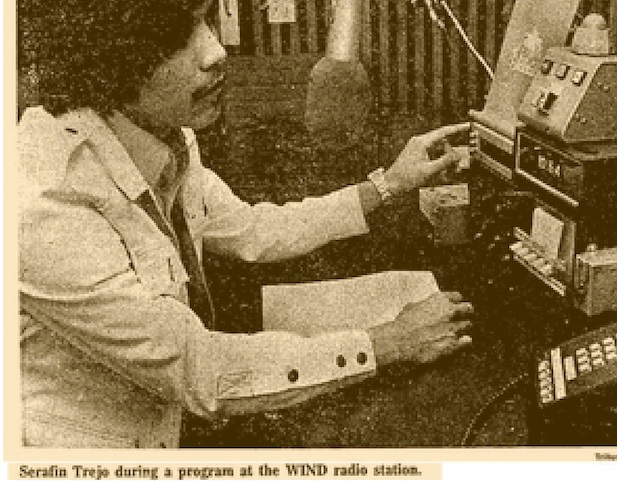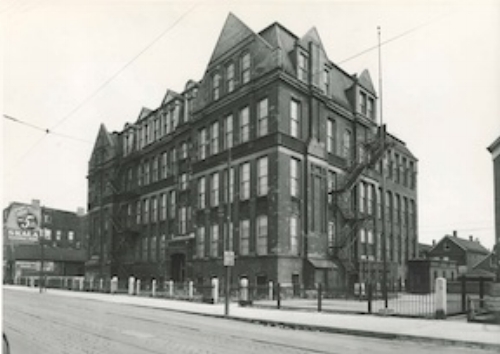I compiled a list of newspapers (neighborhood, community, school and community, daily, weekly, newsletters, and magazines ) that served or reported on Latinx communities of Chicago. This list includes bilingual, Spanish and English language publications,. Most of these newspapers were published between 1927-1985. I included dates only in cases where I saw only one newspaper, or saw a range of dates. Very few newspapers were archived, and most of what I found were from clippings. NOTE: This is a work in-progress. I began compiling the list in 2016, and will update as I discover more. Please contact me if you would like to share any information. I am working on a guide for locating newspapers and clippings next.
Abrazo (published by MARCH, Movimiento ARtistico CHicano organization)
El Aguila (Benito Juarez HS student paper)
The Anchor (Farragut HS student paper)
El Barzon [Letras y Noticias]
The Chicagoland Community Reporter [Our Community’s Oldest and Best Newspaper] 80s
El Chicago Latino
El Clarin Chicano [Mexican /American] 70s
The Community News (Serving the Near West Side)
Despertador/Get Up Stand Up
¡Exito! [El periódico para toda la familia]
EXTRA [Bilingual Community Newspapers- Spanish/English South Side Editions]
Extra [Sirviendo las comunidades de Pilsen, Lawndale, Little Village]
Get Up Stand Up/Despertador
The Hispanic Times
Chicagoland Community Reporter
El Chicago Latino
El Gallito [Seminario vacilador de chismes, cuentos y caricaturas] 1920s
El Heraldo de Las Americas [Seminario de las Información y Variedades] 20s
El Heraldo [El Periódico Mexicano Para La Colonia Mexicana] 20s
El Heraldo [de Chicago] 80s
Heraldo del Norte
The Hispanic Times [With the truth I neither fear nor offend…] 1980s
El Imparcial de Chicago [Spanish Weekly Newspaper]
El Independiente
El Informador [Eslabón de Cultura Hispano-Americana]
Imparcial de Chicago
Kalpulli News [Vocero de la Comunidad Latinoamericana]
Lawndale News West Side Times [Noticiero Bilingue. Bilingual Newspapers] 80-90s
Latin Times [nadie tiene derecho o lo superfluo mientras alguien carezca de lo indispensable] 68
La Linterna
The Logan Square Free Press
The Lincoln Park Press [People First]
El Mañana [El Primer Diario en Español del Medio Oeste]
El Mañana [weekly]
Mirarte [Chicago’s Latino Art Publication]
Momento
El Norte [the North of Chicago Weekly News]
La Noticia Mundial [El Gran Semanario Hispano-Americano de Chicago] 20s
Nuevo Siglo
Northeast Extra
El Otro
La Opinion [Un Seminario de Todos, Por Todos y Para Todos]
Prensa Libre de Chicago [Midwest’s Largest Spanish-English Newspaper] 70s
Pitirre
La Prensa Adelita [Noticias Comunitarias Latinas. Latino Community News] 90s
Radar Latino [El Crisol Informativo de la Comunidad Hispana] 80s
La Raza El Tiempo[Voz y Expresión de América Latina] 80s
La Raza [Semanario Mexicano Independiente] 20s
Sin Fronteras [Vocero del Trabajador Mexicano]
Sin Fronteras [El Periódico Del Pueblo Obrero Latino. Texas, California, Colorado, Illinois, New York] 70s
Tribuna America
La Verdad [Fraternidad, Accion, Patria] 20s
Venceremos [UFW Chicago newsletter]
El Viento de Chicago
La Voz de Chicago
Voz del Pueblo [Semanario al Servicio del Trabajadores] 80s
West Side Times [The Paper with Want Ads, pub Sun and Thurs] 80s
Wicker Park/West Town Extra




















